Text
企业监控电脑软件:效率提升的利器还是信任危机的导火索?
在现代企业管理中,企业监控电脑软件正逐渐成为许多组织的标配工具。这些软件通过实时追踪员工的电脑使用情况,帮助企业优化资源、提升效率。然而,它们也引发了关于隐私、信任和法律边界的激烈争论。企业监控电脑软件究竟是管理者的得力助手,还是员工的“隐形枷锁”?本文将从技术原理、应用场景、利弊分析以及潜在风险等角度,探讨这一话题,希望引发读者的思考。
企业监控电脑软件的工作原理与功能
企业监控电脑软件是一类通过安装在员工电脑上的程序,实时或定期收集使用数据的工具。它们可以记录键盘输入、屏幕活动、应用程序使用情况、网页浏览记录,甚至是员工的地理位置(对于远程办公场景)。常见的软件包括WorkWin、Teramind、Hubstaff和ActivTrak。这些工具各有侧重,但核心目标一致:为企业提供数据支持,以优化工作流程。
以WorkWin为例,这款软件以其简洁的界面和强大的实时监控功能受到关注。它可以生成详细的员工活动报告,帮助管理者了解团队的工作状态。Teramind则更注重安全,具备防数据泄露功能,适合对信息安全要求较高的企业。Hubstaff以时间追踪为核心,适合需要按小时计费的自由职业团队。ActivTrak则强调用户行为分析,通过AI算法预测员工的工作效率。这些软件的功能虽各有千秋,但都围绕着“监控”这一核心展开。

应用场景:为什么企业需要企业监控电脑软件?
企业监控电脑软件的兴起并非偶然。在竞争激烈的商业环境中,效率和安全是企业的生命线。以下是几个典型的应用场景:
提升生产力:通过分析员工的电脑使用习惯,企业可以发现哪些环节耗时过多。例如,某设计公司发现员工每天花大量时间在社交媒体上,调整政策后,项目交付效率提升了20%。
远程办公管理:疫情加速了远程办公的普及,但也带来了管理难题。企业监控电脑软件可以帮助管理者了解远程员工的工作状态,确保任务按时完成。
数据安全:对于金融、医疗等行业,数据泄露可能导致灾难性后果。监控软件可以及时发现异常行为,如未经授权的文件传输。
合规性要求:某些行业需要严格遵守法规,监控软件可以记录操作日志,以备审计。
这些场景表明,企业监控电脑软件在特定情况下确实能带来显著收益。然而,收益背后隐藏的风险同样不容忽视。
利弊权衡:企业监控电脑软件的双刃剑效应
企业监控电脑软件的优点显而易见:它为管理者提供了数据支持,帮助优化资源分配、提升效率。然而,任何技术都不是完美的,以下是其潜在的弊端:
优点:
数据驱动决策:通过量化员工行为,企业可以更科学地制定管理策略。
提高透明度:在远程办公中,监控软件可以减少沟通成本,让管理者更清楚团队动态。
防范风险:无论是内部数据泄露还是外部攻击,监控软件都能起到预警作用。
缺点:
信任危机:员工可能因被监控而感到不被信任,导致士气低落。一项调查显示,近60%的员工对工作场所监控表示反感。
隐私争议:监控软件可能记录员工的个人活动(如私人聊天),这不仅影响员工体验,还可能触及法律红线。
管理成本:部署和维护监控软件需要投入时间和资金,中小型企业可能难以承受。
法律与伦理:企业监控电脑软件的边界在哪里?
在使用企业监控电脑软件时,法律和伦理问题是绕不开的话题。许多地区对工作场所监控有严格的法律规定,例如要求企业必须事先通知员工,并明确监控的范围和目的。如果企业未经同意擅自监控,可能面临法律诉讼或罚款。
以一个案例为例:某企业因未提前告知员工而秘密安装监控软件,被员工发现后引发集体抗议,最终不得不支付高额赔偿并公开道歉。这个案例提醒我们,透明和沟通是使用企业监控电脑软件的前提。
从伦理角度看,监控的边界同样模糊。员工是否愿意接受监控?监控的程度是否合理?例如,记录员工的屏幕截图是否比单纯统计应用使用时间更具侵入性?这些问题没有标准答案,但企业需要在效率与尊重之间找到平衡。
员工视角:被监控是一种怎样的体验?
想象一下,你正在电脑前工作,突然意识到每一个键盘敲击、每一次鼠标点击都被记录在案。你会感到轻松,还是压力倍增?对于许多员工来说,企业监控电脑软件的存在就像头顶的“电子眼睛”,让人难以放松。
一位匿名员工分享了自己的经历:“公司安装了WorkWin后,我总觉得自己被盯着。每次想休息一下看看新闻,都会下意识担心被记录。虽然我知道公司是为了提高效率,但这种感觉真的不舒服。”这种心理负担可能导致员工的创造力下降,甚至增加离职率。
然而,也有人持不同看法。另一位员工表示:“我们团队用Hubstaff追踪时间,我觉得挺好。它让我更专注,也能证明我的工作量,绩效评估时更有说服力。”这表明,监控软件的效果因人而异,很大程度上取决于企业的实施方式和沟通透明度。

如何平衡效率与信任?
面对企业监控电脑软件的争议,企业该如何权衡?以下是几点建议,供管理者参考:
透明沟通:在使用监控软件前,向员工明确说明目的、范围和数据使用方式。透明度是建立信任的基础。
合理设定边界:避免过度监控,例如只记录工作相关数据,不涉及私人信息。
关注员工福祉:监控的最终目的是提升效率,而非制造压力。企业应定期收集员工反馈,调整策略。
选择适合的工具:不同企业的需求不同,选择功能适配的软件(如WorkWin、Teramind等)可以减少不必要的冲突。
结语:技术无罪,关键在于如何使用
企业监控电脑软件作为一种管理工具,既能为企业带来效率提升,也可能引发信任危机和法律风险。它的价值取决于使用者的智慧:是用它来优化流程、赋能团队,还是将其变成压迫员工的“枷锁”?作为管理者,你会如何选择?作为员工,你又是否能接受这种监控?欢迎在评论区分享你的看法,让我们一起探讨技术的边界与人性的平衡。
0 notes
Text
The Rise of Real-Time Employee Monitoring Software: Balancing Productivity and Privacy
In today’s fast-paced work environment, businesses are increasingly turning to technology to optimize operations and boost efficiency. One tool that’s gained significant traction is real-time employee monitoring software. These platforms promise to provide employers with insights into how employees spend their time, track productivity, and ensure accountability. But as their adoption grows, so do the questions about their implications. Are they a game-changer for workplace efficiency, or do they risk alienating employees and eroding trust? Let’s dive into the world of real-time employee monitoring software, exploring its benefits, challenges, and the deeper questions it raises.

What Is Real-Time Employee Monitoring Software?
Real-time employee monitoring software refers to tools that track and record employee activities as they happen. These platforms can capture a wide range of data, from screen activity and application usage to keystrokes, website visits, and even location tracking for remote workers. Unlike traditional performance reviews or periodic check-ins, real-time employee monitoring software provides instant, granular insights into what employees are doing during work hours. Popular tools in this space include OsMonitor, Teramind, ActivTrak, and Hubstaff, each offering a suite of features designed to help employers manage their workforce more effectively.
For example, OsMonitor is known for its lightweight design and ability to monitor screens, log web activity, and block non-work-related applications. Teramind goes a step further with advanced analytics and behavioral alerts, while ActivTrak focuses on user-friendly dashboards to track productivity trends. Hubstaff, meanwhile, emphasizes time tracking and integrates features like GPS for field-based teams. These tools share a common goal: to give employers a clearer picture of how time and resources are being used.
The Case for Real-Time Monitoring
From a business perspective, the appeal of real-time employee monitoring software is undeniable. Companies invest heavily in their workforce, and ensuring that employees are focused on their tasks can directly impact the bottom line. For instance, a marketing agency might use a tool like ActivTrak to see how much time employees spend on client projects versus browsing social media. By identifying inefficiencies, managers can reallocate resources, provide targeted training, or adjust workflows to maximize output.
Consider a hypothetical scenario: a small tech startup notices a dip in project delivery times. Using real-time employee monitoring software, the manager discovers that developers are spending significant time troubleshooting issues due to outdated tools. Armed with this data, the company invests in better software, streamlining processes and boosting productivity. In this case, the software didn’t just track activity—it provided actionable insights that led to meaningful change.
Beyond productivity, real-time employee monitoring software can enhance security. Tools like Teramind can detect suspicious behavior, such as unauthorized file transfers or attempts to access restricted sites, helping businesses protect sensitive data. For industries handling confidential information—like finance or healthcare—this capability is critical. The software can also ensure compliance with internal policies, reducing the risk of costly mistakes.
The Other Side: Privacy and Trust Concerns
However, the use of real-time employee monitoring software isn’t without controversy. Employees often feel uneasy knowing their every click or keystroke is being tracked. It’s not hard to see why: constant surveillance can create a sense of distrust, making workers feel like they’re under a microscope rather than valued team members. A 2023 survey by a workplace analytics firm found that 60% of employees felt stressed or demotivated when monitored excessively, raising questions about the long-term impact on morale.
There’s also the issue of privacy. While employers have a right to monitor company-owned devices, the line gets blurry when personal activities overlap with work. For example, an employee might check a personal email during a break, only to have that activity logged by software like OsMonitor. Without clear communication about what’s being tracked and why, employees may feel their personal boundaries are being violated. This tension can lead to resentment, reduced engagement, or even higher turnover rates.
Legal risks add another layer of complexity. Many jurisdictions have strict regulations governing workplace monitoring, requiring employers to inform employees about surveillance practices and obtain consent in some cases. Failure to comply can result in lawsuits or fines, particularly if monitoring extends to personal devices or activities outside work hours. Businesses must tread carefully, ensuring their use of real-time employee monitoring software aligns with legal standards and ethical considerations.
Striking a Balance: Best Practices for Implementation
So, how can companies use real-time employee monitoring software effectively without alienating their workforce? The key lies in transparency and purpose. Employers should clearly communicate what data is being collected, how it will be used, and what safeguards are in place to protect employee privacy. For instance, a company using Hubstaff might explain that the software tracks time spent on specific tasks to improve project estimates, not to micromanage individual performance.
Another best practice is to focus on outcomes rather than minutiae. Instead of fixating on every website visited or keystroke logged, managers should use the data to identify broader trends. For example, ActivTrak’s dashboards can highlight team-wide productivity patterns, allowing leaders to address systemic issues without singling out individuals. This approach shifts the focus from surveillance to improvement, fostering a more collaborative environment.
It’s also worth considering employee input. Before rolling out real-time employee monitoring software, companies could involve workers in the decision-making process, asking for feedback on which features would be most helpful or least intrusive. This not only builds trust but also ensures the tool aligns with the team’s needs. A call center, for instance, might find that employees appreciate software that tracks call times to streamline schedules, as long as it’s not used to penalize minor deviations.
A Real-World Example: The Double-Edged Sword
To illustrate the complexities, let’s look at a fictional case study. A mid-sized consulting firm implemented real-time employee monitoring software to track billable hours for clients. The tool, similar to Hubstaff, provided detailed reports on how consultants spent their time, helping the firm invoice clients accurately and identify areas for efficiency. Initially, the results were impressive: billable hours increased by 15%, and clients appreciated the transparency.
But six months in, the firm noticed a spike in employee turnover. Exit interviews revealed that many felt the software created a culture of mistrust. Consultants resented being monitored during downtime, and some worried that personal activities, like quick chats with colleagues, were being scrutinized. The firm responded by revising its approach: it limited monitoring to billable tasks, provided regular updates on how data was used, and held workshops to address employee concerns. Turnover slowed, but the experience underscored the need for careful implementation.
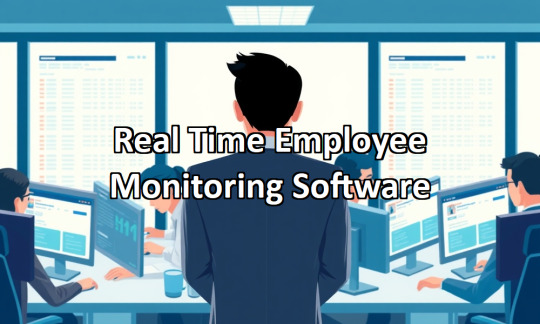
The Bigger Picture: Necessity and Ethics
The rise of real-time employee monitoring software forces us to confront broader questions about the modern workplace. Is constant oversight necessary to achieve productivity, or are there better ways to motivate employees? Could fostering a culture of trust and autonomy yield better results than tracking every move? And how do we balance the legitimate needs of a business with the rights of individuals to feel respected and valued?
There’s no one-size-fits-all answer. For some organizations—like those in highly regulated industries—real-time employee monitoring software may be essential to ensure compliance and protect data. For others, the benefits may not outweigh the costs to morale and culture. The decision to adopt these tools should be driven by a clear understanding of their purpose and impact, not just a desire to keep tabs on employees.
Final Thoughts: A Tool, Not a Cure-All
Real-time employee monitoring software, whether it’s OsMonitor, Teramind, ActivTrak, or Hubstaff, offers powerful capabilities for businesses looking to optimize productivity and security. But like any tool, its value depends on how it’s used. When implemented thoughtfully, it can provide valuable insights and drive meaningful improvements. When used carelessly, it risks creating a workplace where employees feel watched rather than supported.
As you reflect on this topic, consider your own experiences. If you’re an employer, what would motivate you to adopt real-time employee monitoring software, and how would you ensure it’s used ethically? If you’re an employee, how would you feel knowing your work is being tracked in real time? These questions don’t have easy answers, but they’re worth asking as technology continues to reshape the workplace. What’s your take—does the promise of productivity justify the intrusion, or is there a better way to build a thriving workforce?
0 notes
Text
How to Monitor Employee Activity on Computers: Balancing Productivity, Privacy, and Ethics
In today’s digital workplace, keeping tabs on how employees use company computers is a growing priority for many organizations. The ability to monitor employee activity on computers can provide insights into productivity, safeguard sensitive data, and ensure compliance with workplace policies. However, it also raises complex questions about trust, privacy, and the ethical boundaries of oversight. This article explores how to monitor employee activity on computers effectively, the tools available, their benefits and risks, and the delicate balance businesses must strike to maintain a healthy work environment.
Why Monitor Employee Activity on Computers?
The rationale behind monitoring employee computer activity often stems from a need to optimize operations. Businesses want to ensure that work hours are spent on tasks that align with organizational goals. For instance, a marketing team might be expected to focus on campaign development, but if employees are spending hours on social media or unrelated websites, productivity suffers. Monitoring can also protect against data breaches, as it helps detect unauthorized file transfers or access to sensitive systems. Additionally, in industries handling regulated data—like healthcare or finance—monitoring ensures compliance with strict legal standards.
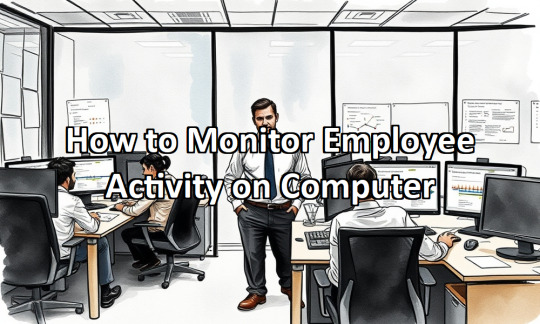
Consider a scenario: a mid-sized company notices a dip in project delivery times. Managers suspect employees are distracted by non-work-related activities. By implementing software to monitor employee activity on computers, they discover that a significant portion of work hours is spent on streaming platforms. Armed with this data, they can address the issue through training or policy adjustments. Yet, this same scenario raises a question: does constant monitoring erode trust, making employees feel like they’re under a microscope?
Tools for Monitoring Employee Activity on Computers
Several software solutions are widely used to monitor employee activity on computers, each offering unique features to suit different organizational needs. Here are four notable options:
OsMonitor: This lightweight software is designed for real-time tracking of employee screens, web activity, and application usage. OsMonitor allows employers to block specific websites, track file transfers, and generate detailed reports on employee behavior. Its ability to operate in stealth mode makes it discreet, though this feature can spark ethical debates.
Teramind: Known for its comprehensive tracking capabilities, Teramind captures everything from keystrokes to email activity. It uses AI to detect anomalies, such as unusual file transfers, which can signal potential insider threats. Its real-time alerts and detailed analytics make it a favorite for businesses prioritizing security.
ActivTrak: Focused on productivity, ActivTrak offers user-friendly dashboards that categorize activities as productive or unproductive. It’s particularly useful for remote teams, providing insights into work patterns without being overly invasive. Its free plan is a draw for smaller businesses.
Hubstaff: While primarily a time-tracking tool, Hubstaff includes robust monitoring features like URL tracking and screenshot capture. Its integration with project management tools makes it ideal for teams juggling multiple tasks, though it may lack the depth of security-focused alternatives.
These tools share a common goal: to provide visibility into how employees use company resources. However, their implementation requires careful consideration to avoid misuse or overreach.
The Benefits of Monitoring Employee Activity on Computers
When done thoughtfully, monitoring employee activity on computers can yield significant advantages. First, it boosts productivity by identifying time-wasting habits. For example, a software development firm might use ActivTrak to discover that developers are spending excessive time on non-coding tasks, prompting a reallocation of resources. Second, it enhances security. Teramind’s AI-driven alerts can flag when an employee attempts to copy sensitive client data to an external drive, potentially preventing a costly breach. Third, monitoring supports compliance in regulated industries, where detailed activity logs can serve as evidence during audits.
Moreover, monitoring can foster accountability. Employees aware of oversight may be more likely to stay focused, knowing their actions are trackable. In one case, a call center implemented Hubstaff to track task engagement. The result? A 20% increase in call resolution rates as employees prioritized core responsibilities over distractions.
The Risks and Ethical Dilemmas
Despite these benefits, monitoring employee activity on computers is not without pitfalls. The most pressing concern is privacy. Employees may feel their autonomy is compromised, leading to resentment or disengagement. A 2022 study found that 60% of workers felt stressed when monitored excessively, with some reporting a sense of distrust toward their employers. This raises a critical question: does the pursuit of productivity justify the potential erosion of workplace morale?
Legal risks also loom large. Many jurisdictions require employers to inform employees about monitoring practices, often through explicit policies or consent agreements. Failure to comply can lead to lawsuits or penalties, especially if monitoring extends to personal activities on company devices. For instance, capturing personal emails or messages could violate privacy laws, turning a well-intentioned tool into a legal liability.
Another risk is the potential for misuse. Managers might misinterpret data, assuming an employee is unproductive based on metrics like idle time, when in reality, they’re engaged in critical thinking or offline tasks. OsMonitor’s idle browsing feature, for example, attempts to filter out inactive periods, but no tool is foolproof. Overreliance on data can dehumanize the workplace, reducing employees to numbers rather than individuals.
Striking a Balance: Best Practices for Monitoring
To monitor employee activity on computers effectively and ethically, businesses should adopt a balanced approach:
Transparency is Key: Inform employees about what’s being monitored and why. A clear policy outlining the scope of monitoring—whether it’s web activity, app usage, or screenshots—builds trust. For example, explaining that Teramind is used to protect client data can frame monitoring as a shared responsibility rather than surveillance.
Focus on Outcomes, Not Micromanagement: Use monitoring to identify trends, not to nitpick every action. Hubstaff’s productivity insights are most valuable when used to optimize workflows, not to punish employees for taking breaks.
Respect Boundaries: Avoid monitoring personal activities, such as emails sent after hours or non-work-related browsing during breaks. Tools like ActivTrak allow customization to respect these boundaries, reducing the risk of overreach.
Engage Employees in the Process: Involve staff in discussions about monitoring policies. This can uncover concerns early and foster a culture of mutual respect. For instance, a company might hold a town hall to explain why OsMonitor is being implemented and how it will benefit the team.
Regularly Review Practices: Monitoring tools evolve, as do workplace dynamics. Periodically assess whether the chosen software aligns with organizational goals and employee well-being. If a tool like Hubstaff feels too intrusive, consider switching to a less invasive option like ActivTrak.
The Bigger Picture: Necessity vs. Trust
The decision to monitor employee activity on computers forces businesses to confront a fundamental question: is it worth it? On one hand, the data provided by tools like OsMonitor, Teramind, ActivTrak, or Hubstaff can drive efficiency and security. On the other, excessive monitoring can breed resentment, stifle creativity, and even push talented employees to leave. A tech startup, for example, might find that heavy-handed monitoring alienates its developers, who thrive on autonomy and trust.
There’s also the matter of necessity. Not every business needs comprehensive monitoring. A small creative agency might benefit more from open communication and periodic check-ins than from software tracking every keystroke. Conversely, a financial institution handling sensitive data might find monitoring indispensable. The key is to align the level of oversight with the organization’s specific needs and culture.
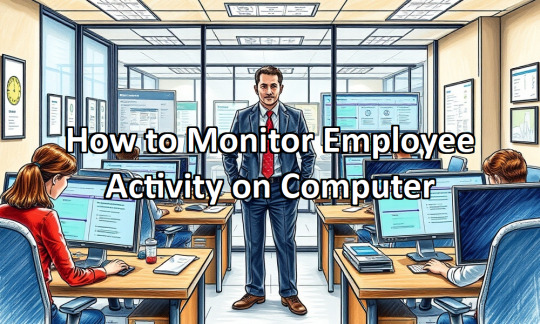
Sparking Reflection: What’s Your Take?
Monitoring employee activity on computers is a double-edged sword. It offers undeniable benefits—productivity gains, enhanced security, and compliance—but comes with risks that can’t be ignored. As a manager, would you feel comfortable knowing your every click is tracked? As an employee, how would you react to learning your employer uses tools like Teramind or OsMonitor? And for business owners, how do you weigh the cost of monitoring against the cost of lost trust?
These questions don’t have easy answers, but they’re worth pondering. The right approach depends on your organization’s values, goals, and the people who make it run. By choosing tools thoughtfully, setting clear policies, and fostering open dialogue, businesses can monitor employee activity on computers in a way that supports both productivity and a positive workplace culture.
Ultimately, the goal isn’t just to watch employees—it’s to empower them to do their best work while safeguarding the organization’s interests. How would you strike that balance?
0 notes
Text
How Employee Website Monitoring Software Shapes the Modern Workplace
In today’s digital-first work environment, where remote teams and hybrid setups are commonplace, businesses are increasingly turning to technology to manage productivity and security. Among these tools, employee website monitoring software has emerged as a cornerstone for organizations aiming to oversee online activities, ensure compliance, and optimize workflows. But what exactly does this software do, and why is it sparking such heated debate among employers and employees alike? In this article, I’ll explore the mechanics, benefits, and ethical quandaries of employee website monitoring software, weaving in real-world insights and questions that might prompt you to rethink its role in the workplace.
What Is Employee Website Monitoring Software?
At its core, employee website monitoring software is a tool that tracks and records employees’ online activities during work hours. It captures data like websites visited, time spent on specific pages, application usage, and sometimes even keystrokes or screenshots. Tools like OsMonitor, ActivTrak, Teramind, and Hubstaff are well-known in this space, each offering unique features tailored to different organizational needs. For instance, OsMonitor emphasizes real-time monitoring and detailed reports, while ActivTrak focuses on productivity analytics with a user-friendly interface. Teramind excels in behavior analytics, and Hubstaff integrates time tracking with monitoring for project-based teams.
These platforms aim to provide employers with insights into how employees spend their time online, often with the goal of boosting efficiency, protecting sensitive data, or ensuring compliance with internal policies. Imagine a call center where managers use employee website monitoring software to confirm agents are focused on customer service platforms rather than scrolling social media. Or consider a financial firm safeguarding client data by flagging unauthorized access to risky websites. The use cases are varied, but the underlying principle is control—control over time, resources, and risks.
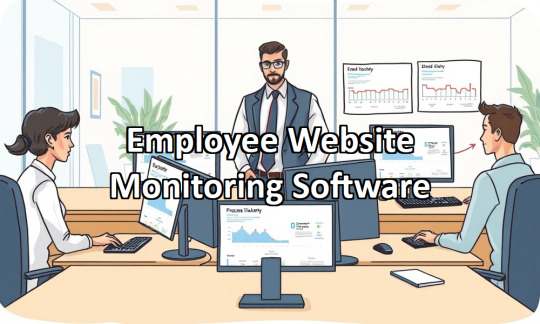
The Case for Monitoring: Efficiency and Security
From an employer’s perspective, employee website monitoring software is a game-changer. It offers tangible benefits that align with business goals. For one, it can pinpoint productivity bottlenecks. In a marketing agency, for example, a manager might notice that a team member spends hours on non-work-related sites, dragging down project timelines. With tools like Hubstaff, they can generate reports showing time allocation, enabling targeted coaching rather than blanket reprimands.
Security is another compelling driver. Data breaches are a nightmare for any organization, and employee website monitoring software can act as a first line of defense. Teramind, for instance, can detect when an employee accesses a suspicious site or attempts to transfer sensitive files. In industries handling confidential information—like healthcare or finance—this capability is critical. A single misstep, like clicking a phishing link, can cost millions in damages or lost trust.
Moreover, monitoring software ensures compliance with internal policies or industry regulations. In a corporate setting, where employees must adhere to strict guidelines about internet usage, tools like ActivTrak can log activities to demonstrate due diligence during audits. This isn’t just about catching rule-breakers; it’s about creating a culture of accountability where everyone understands the stakes.
The Other Side: Privacy and Trust
But here’s where things get murky. While employee website monitoring software promises efficiency and security, it often comes at a cost to employee morale and trust. Imagine logging into your work computer, knowing every click is being tracked. Would you feel empowered or scrutinized? For many employees, the answer is the latter. A 2023 study from a global research firm found that 62% of workers felt uneasy about being monitored, with some reporting increased stress and a sense of being micromanaged.
The legal risks are equally thorny. Without clear communication or consent, using employee website monitoring software can skirt the edges of privacy laws. In some jurisdictions, employers must inform employees about monitoring practices and, in certain cases, obtain explicit consent. Failing to do so could lead to lawsuits or reputational damage. A real-world example: a company faced backlash when employees discovered their keystrokes were being logged without prior notice, leading to a public relations crisis and costly legal battles. This raises a critical question: where’s the line between oversight and overreach?
There’s also the matter of trust. Employees who feel watched may disengage, reducing the very productivity the software aims to enhance. In a creative industry, like graphic design, where inspiration often comes from browsing diverse websites, heavy-handed monitoring could stifle innovation. If a designer using OsMonitor is flagged for visiting art blogs, even though those sites fuel their work, they might feel unfairly targeted. Over time, this erodes the employer-employee relationship, fostering resentment instead of collaboration.
Striking a Balance: Ethical Implementation
So, how can organizations use employee website monitoring software without alienating their workforce? The answer lies in transparency and purpose. First, employers should clearly communicate what’s being monitored, why, and how the data will be used. A tech startup, for example, might hold a town hall explaining that Teramind is used to protect proprietary code, not to police personal breaks. This openness can demystify the process and reduce anxiety.
Second, proportionality matters. Monitoring every keystroke or taking frequent screenshots—as some tools like OsMonitor allow—might be overkill for a team of trusted professionals. Instead, focusing on high-risk activities, like accessing unapproved websites, strikes a better balance. ActivTrak’s approach, which emphasizes aggregate data over individual surveillance, can feel less invasive while still providing actionable insights.
Finally, involving employees in the conversation is key. Why not ask your team what they think about employee website monitoring software? A mid-sized consultancy did just that, surveying employees before implementing Hubstaff. The feedback led to a policy where monitoring was limited to work-related applications, with personal browsing excluded unless it violated security protocols. The result? Higher acceptance and fewer complaints.
The Bigger Picture: Necessity or Overreach?
The rise of employee website monitoring software forces us to confront deeper questions about the modern workplace. Is it a necessary tool in an era of remote work and cyber threats, or is it a step toward a surveillance culture that undermines autonomy? The answer depends on the organization’s goals and values. A high-security firm handling sensitive data might see tools like Teramind as non-negotiable, while a creative agency might find them stifling.
There’s also the question of fairness. Monitoring often disproportionately affects lower-level employees, while senior staff may escape scrutiny. This can create a perception of double standards, further eroding trust. And what about remote workers versus in-office teams? If employee website monitoring software is applied unevenly, it risks alienating parts of the workforce.
A Case Study to Ponder
Consider a mid-sized e-commerce company that adopted employee website monitoring software to curb time-wasting during a critical holiday season. They chose ActivTrak to track website usage across their customer support team. Initially, productivity spiked as employees focused on core tasks. But within months, turnover increased. Exit interviews revealed that workers felt micromanaged, with one employee saying, “I was afraid to check my email for two minutes because it might show up as ‘unproductive.’” The company eventually scaled back monitoring to focus only on security risks, and morale improved. This begs the question: did the short-term gains justify the long-term costs?
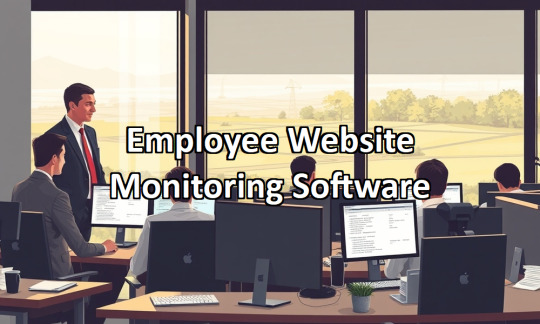
What’s Next for Monitoring Software?
As technology evolves, so does employee website monitoring software. AI-driven tools, like those offered by Teramind, are becoming more sophisticated, analyzing behavior patterns to predict risks rather than just logging clicks. This could make monitoring less intrusive but also raises new ethical concerns about predictive profiling. Will employees be judged not just for what they do but for what an algorithm thinks they might do?
Ultimately, the debate around employee website monitoring software isn’t just about technology—it’s about trust, autonomy, and the kind of workplace we want to build. For employers, the challenge is using these tools to enhance productivity and security without crossing into surveillance territory. For employees, it’s about balancing accountability with personal freedom. And for all of us, it’s worth asking: how much oversight is too much? Should there be universal guidelines for monitoring, or is it up to each organization to draw the line? I’d love to hear your thoughts—whether you’re an employer, an employee, or someone navigating this tricky terrain.
0 notes
Text
控制局域网电脑上网:技术、挑战与思考
在现代企业与家庭环境中,网络已成为不可或缺的工具,但随之而来的管理需求也日益凸显。如何有效 控制局域网电脑上网,既能保障网络资源的高效利用,又能兼顾隐私与自由,成为许多管理者与技术爱好者��同探讨的话题。本文将从技术实现、实际案例、潜在风险与利弊等角度,深入剖析 控制局域网电脑上网 的方法与意义,力求为读者提供全面的视角,引发更深层次的思考。
控制局域网电脑上网的背景与必要性
局域网(LAN)是企业、家庭或公共场所中常见的网络架构,用于连接多台设备以共享资源。控制局域网电脑上网,简单来说,是通过技术手段限制或管理特定设备在网络中的访问权限、内容或时段。这种需求源于多种场景:企业希望提升员工工作效率,防止无关网页分散注意力;学校可能需要限制学生访问不适宜内容;家庭中,家长可能希望为孩子营造健康的网络环境。
以企业为例,员工在工作时间浏览社交媒体、视频网站或进行无关下载,可能导致生产力下降。据一项研究,员工每天平均花费1-2小时在非工作相关的网络活动上,这对企业资源是一种隐形浪费。因此,控制局域网电脑上网 成为一种管理策略,旨在优化资源分配、保护网络安全,同时确保核心业务不受干扰。

技术实现:工具与方法
实现 控制局域网电脑上网 的方法多种多样,常见工具包括网络管理软件、路由器设置与防火墙规则。以下介绍几种主流工具及其功能,但不涉及推广,仅供技术参考:
WorkWin:这是一款专注于企业环境的网络管理软件,支持实时监控局域网内电脑的上网行为。它可以设置访问白名单、黑名单,限制特定网站的访问,甚至记录员工的上网时长与内容。WorkWin的优势在于界面友好,适合中小型企业快速部署。
NetLimiter:一款功能强大的流量控制工具,允许管理员为每台设备设置带宽上限,或完全阻止某些应用程序的网络访问。它适合需要精细化管理的场景,如优先保障关键业务应用的网络资源。
OpenDNS:通过云端DNS服务,OpenDNS能够过滤不安全或不适宜的网站内容,适合学校或家庭使用。它支持按类别屏蔽网站,操作简单且无需复杂硬件支持。
pfSense:一款开源防火墙和路由器软件,功能强大但需要一定技术基础。它可以通过设置规则实现对局域网内设备的精细化管理,如限制特定IP地址的访问权限或时间段。
这些工具的实现原理通常基于IP地址过滤、域名屏蔽、带宽分配或行为监控。例如,管理员可以通过设置防火墙规则,禁止局域网内的电脑访问特定IP地址的视频流媒体平台;或者利用时间策略,限制非工作时间的网络使用。���些方法在技术上可行,但在实际应用中需要权衡利弊。
案例分享:企业中的实践与挑战
以一家中型企业为例,其IT部门部署了 WorkWin 来 控制局域网电脑上网,目标是提高员工专注度。管理员设置了规则,禁止访问社交媒体和视频网站,同时限制非工作相关软件的带宽。初期效果显著,员工反馈工作效率有所提升,网络拥堵问题也得到缓解。然而,三个月后,部分员工开始抱怨,觉得被过度监控,缺乏信任感,甚至有人通过VPN绕过限制,引发了新的管理难题。
这个案例反映了 控制局域网电脑上网 的双面性:一方面,它确实能优化资源使用;另一方面,过度控制可能引发员工不满,甚至影响企业文化。管理者需要思考:如何在效率与员工体验之间找到平衡?是否需要透明地向员工说明监控政策?这些问题没有标准答案,但值得深入探讨。
法律与道德的边界
在实施 控制局域网电脑上网 时,法律与道德风险不容忽视。一些地区的数据保护法规明确规定,监控员工上网行为需要事先告知,且不得擅自收集个人敏感信息。例如,记录员工访问的具体网页内容可能涉及隐私侵权,若未经同意,可能导致法律纠纷。此外,员工可能因感到被过度监控而产生心理压力,这对长期的工作积极性不利。
管理者需要问自己:控制局域网电脑上网 的目的是什么?是为了提升效率,还是为了防范安全风险?如果目的是正当的,是否可以通过更透明的方式实现?例如,与其完全屏蔽某些网站,不如通过培训和沟通引导员工合理使用网络资源。这种方式可能更能赢得员工的理解与支持。
利弊权衡:必要性与反思
控制局域网电脑上网 的好处显而易见:提高网络资源利用率、降低安全风险、优化工作效率。对于企业而言,这可能直接转化为成本节约和生产力提升;对于家庭或学校,这有助于营造安全的网络环境。然而,弊端同样不可忽视:
员工/用户体验:严格的限制可能让员工感到不被信任,或者让学生/孩子感到自由受限,进而引发抵触情绪。
技术绕过:技术娴熟的用户可能通过VPN、代理服务器等方式绕过限制,这增加了管理的复杂性。
成本与维护:部署和维护网络管理工具需要投入时间和资金,尤其是像pfSense这样需要专业知识的工具,可能对小型组织而言负担较重。
因此,实施 控制局域网电脑上网 时,管理者需要明确目标,并根据实际需求选择合适的工具与策略。例如,是否需要全面监控,还是仅限制特定高风险内容?是否可以通过教育而非技术手段达到类似效果?这些问题值得反复推敲。
引发思考:技术之外的可能性
控制局域网电脑上网 不仅仅是技术问题,更是一个涉及管理哲学与人性化关怀的命题。技术可以提供解决方案,但真正的挑战在于如何平衡效率与自由、控制与信任。以下是一些值得读者思考的问题:
如果你是企业管理者,你会如何向员工解释 控制局域网电脑上网 的必要性?如何避免引发不满?
在家庭或学校中,限制网络访问是否会阻碍孩子对知识的探索?有没有更好的替代方案?
随着AI和大数据技术的发展,未来的网络管理工具可能更加智能,但这是否会进一步侵蚀隐私?

结语
控制局域网电脑上网 是一项技术与管理并重的实践。它既能带来效率与安全的提升,也可能引发隐私与信任的争议。无论是企业管理者、家长还是技术爱好者,都需要在实施过程中权衡利弊,找到适合自身场景的平衡点。希望本文能为读者提供实用的参考,同时激发更多关于技术与人性化管理的思考。你认为 控制局域网电脑上网 是利大于弊,还是弊大于利?欢迎分享你的看法!
0 notes
Text
Why Enterprise Application Monitoring Sparks Debate: Balancing Productivity, Privacy, and Progress
In today’s hyper-connected workplaces, where every click, keystroke, and download can impact a company’s bottom line, enterprise application monitoring has become a cornerstone of operational efficiency. Businesses rely on software to track how employees use applications, manage resources, and ensure compliance with internal policies. Tools like OsMonitor, Zabbix, Nagios, and SolarWinds have made it easier than ever to gain real-time insights into application performance and user activity. But while these solutions promise enhanced productivity and security, they also ignite fierce debates about privacy, trust, and the ethical boundaries of workplace oversight. Is enterprise application monitoring a necessary tool for modern organizations, or does it risk alienating employees and creating a culture of surveillance? Let’s dive into the complexities of this topic and explore why it’s worth thinking twice about.
What Is Enterprise Application Monitoring, Anyway?
At its core, enterprise application monitoring involves using software to track and analyze how applications are used within an organization. This can include monitoring employee activity (like which apps they use and for how long), ensuring software performance (think uptime and response times), and detecting potential security threats (such as unauthorized file transfers). Tools like OsMonitor focus on employee activity, offering features like real-time screen monitoring, website tracking, and application usage reports. Others, like Zabbix and Nagios, lean toward infrastructure monitoring, ensuring that enterprise applications run smoothly without crashes or slowdowns. SolarWinds, meanwhile, combines both application performance and network monitoring, providing a holistic view of IT ecosystems.
The appeal is obvious: businesses want to optimize resources, protect sensitive data, and ensure employees stay on task. A single mismanaged application can lead to costly downtime—research suggests that IT outages can cost large enterprises millions per hour. Meanwhile, insider threats, whether malicious or accidental, account for a significant portion of data breaches. Enterprise application monitoring seems like a no-brainer to mitigate these risks. But the story doesn’t end there.

The Case for Monitoring: A Manager’s Perspective
Imagine you’re running a mid-sized company with a remote workforce. Your team uses a mix of cloud-based tools, in-house software, and third-party apps to get work done. Last quarter, productivity dipped, and you suspect employees are spending too much time on non-work-related sites. You also had a near-miss with a data leak when an employee accidentally shared sensitive files. Tools like OsMonitor could help you track application usage, block distracting websites, and flag risky behaviors like unauthorized file transfers. Similarly, Zabbix could alert you to application slowdowns before they frustrate customers, while SolarWinds might pinpoint network bottlenecks affecting critical software.
From a manager’s perspective, enterprise application monitoring is a lifeline. It provides data-driven insights to improve efficiency, allocate resources, and protect the company’s assets. For example, a financial firm might use Nagios to ensure their trading platform stays online 24/7, avoiding catastrophic losses. Monitoring also helps enforce compliance with industry regulations, which often require strict controls over data access and usage. Without these tools, managers are left guessing—or worse, reacting to problems after they’ve spiraled out of control.
The Flip Side: Employee Concerns and Ethical Dilemmas
Now, picture yourself as an employee. You’re diligently working on a project when you notice your screen is being recorded. Your manager later pulls you aside to question why you spent 10 minutes on a news site during lunch. You start wondering: Am I being watched all the time? Can they see my personal emails if I check them on a work device? Suddenly, the workplace feels less like a collaborative space and more like a panopticon.
This is where enterprise application monitoring gets tricky. Employees often feel that monitoring erodes trust, turning them into cogs under constant scrutiny. Studies show that excessive surveillance can lower morale, increase stress, and even reduce productivity—the very opposite of what monitoring aims to achieve. One employee I spoke with (let’s call her Sarah) shared her experience: “My company started using monitoring software last year. It wasn’t just about work apps; they tracked everything, even idle time. I felt like I couldn’t take a breather without justifying it. I ended up leaving because it felt dehumanizing.”
Then there’s the legal angle. Many jurisdictions have strict laws governing workplace monitoring. Some require employers to notify employees about monitoring practices, while others limit what can be tracked (e.g., personal communications). Failure to comply can lead to lawsuits or hefty fines. Even when legal, monitoring can backfire if employees perceive it as invasive. Tools like OsMonitor, which offer detailed tracking of keystrokes and screenshots, can amplify these concerns if not implemented transparently.
The Privacy vs. Productivity Tug-of-War
The tension between privacy and productivity lies at the heart of the enterprise application monitoring debate. On one hand, businesses have a legitimate interest in protecting their operations. A single rogue employee downloading pirated software could introduce malware, crippling critical applications. Tools like SolarWinds can detect such anomalies early. On the other hand, blanket monitoring can create a chilling effect, where employees self-censor or avoid creative problem-solving for fear of being flagged.
Consider a hypothetical scenario: a marketing team uses a cloud-based design tool monitored by Zabbix for performance issues. The tool crashes frequently, frustrating the team. Meanwhile, OsMonitor tracks their application usage, revealing that some employees switch to personal projects during downtime. The manager, armed with this data, reprimands the team for “slacking.” But was it their fault, or was the unstable tool the real culprit? Without context, monitoring data can lead to unfair judgments.
This raises a critical question: how do companies balance oversight with trust? Some argue for transparent policies—informing employees about what’s monitored and why. Others suggest limiting monitoring to specific applications or high-risk activities, using tools like Nagios to focus on system health rather than user behavior. But there’s no one-size-fits-all solution, and the stakes are high. A misstep can erode company culture or invite legal scrutiny.
Real-World Implications: A Tale of Two Companies
To illustrate, let’s look at two fictional companies. Company A, a tech startup, implemented enterprise application monitoring using SolarWinds and OsMonitor. They were upfront with employees, explaining that monitoring aimed to optimize software performance and prevent data leaks. They limited tracking to work-related apps and shared aggregated (not individual) reports with the team. Productivity improved, and employees appreciated the transparency. Company B, a retail chain, took a different approach. They secretly installed monitoring software, including Zabbix and Nagios, to track both application performance and employee activity. When employees discovered they were being watched, trust plummeted. Several quit, and the company faced a PR nightmare.
These stories highlight a key lesson: how monitoring is implemented matters as much as the tools themselves. Transparency, clear boundaries, and a focus on business outcomes can make enterprise application monitoring a win-win. But opaque, heavy-handed approaches can backfire spectacularly.

What’s Next for Enterprise Application Monitoring?
As workplaces evolve, so will enterprise application monitoring. Advances in AI could make tools like OsMonitor smarter, predicting productivity trends or flagging risks with greater accuracy. Meanwhile, Zabbix and Nagios might integrate more user-friendly dashboards, helping IT teams communicate insights to non-technical stakeholders. SolarWinds could expand its focus on hybrid cloud environments, where monitoring becomes even more complex.
But technology alone won’t resolve the ethical questions. Companies must grapple with how much monitoring is too much. Employees, too, have a role to play—advocating for fair policies and understanding the business case for oversight. Ultimately, enterprise application monitoring is a tool, not a verdict. Its success depends on how it’s wielded.
Questions to Ponder
So, where do you stand? If you’re a manager, how would you justify monitoring to your team? If you’re an employee, what level of oversight feels fair? And for everyone: can enterprise application monitoring ever strike a perfect balance between productivity and privacy, or is it doomed to be a battleground? These questions don’t have easy answers, but they’re worth wrestling with. The future of work might just depend on it.
0 notes
Text
How to Monitor Employee Computer Usage: Balancing Productivity, Privacy, and Ethics
In today’s digital workplace, where screens dominate desks and remote work blurs the lines between personal and professional life, keeping tabs on how employees use their computers has become a hot topic. For managers, the question of how to monitor employee computer usage isn’t just about technology—it’s about trust, efficiency, and navigating a minefield of ethical dilemmas. Done right, monitoring can boost productivity and safeguard company resources. Done poorly, it can tank morale and invite legal headaches. So, how do you strike the balance? Let’s dive into the nuances, explore some tools like OsMonitor and others, and unpack the bigger picture to spark some real thinking about what this practice means for businesses and their people.
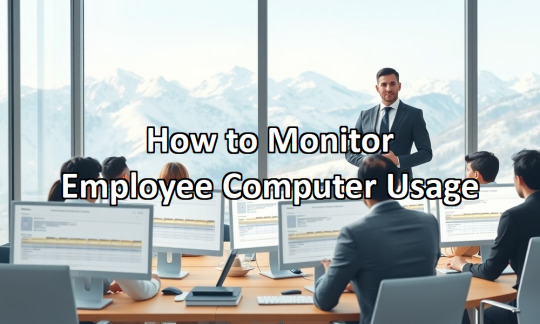
Why Monitor Employee Computer Usage?
Picture this: you’re running a team of 20, and deadlines are looming. You notice some folks are churning out work, while others seem… distracted. Are they stuck on a tough task, or are they scrolling social media? This is where how to monitor employee computer usage becomes a practical concern. Monitoring tools can reveal patterns—time spent on non-work apps, excessive bandwidth usage, or even risky behavior like downloading unapproved software. The data can help optimize workflows, protect sensitive information, and ensure resources are used wisely.
But let’s be real: it’s not just about catching people slacking. Companies have a vested interest in security. A single employee clicking a phishing link can unleash chaos, from data breaches to ransomware. Monitoring can flag suspicious activity early. Plus, in industries with strict compliance rules—think finance or healthcare—tracking computer usage isn’t optional; it’s a regulatory must. Still, the question lingers: is it worth the cost to trust and morale?
Tools for Monitoring Employee Computer Usage
Several software solutions make it easier to track what’s happening on company devices. Let’s look at four well-known options, each with its own flavor, to give you a sense of what’s out there. (No sales pitch here—just the facts to help you think through what fits your needs.)
OsMonitor: This lightweight Windows-based tool is a favorite for its simplicity. It tracks screen activity, website visits, app usage, and even file transfers in real-time. You can block non-work sites or USB drives, and its reports are clear enough for non-techy managers to digest. Its one-time purchase model is budget-friendly, but it’s Windows-only, which might limit its appeal.
Teramind: Known for its robust analytics, Teramind goes deep. It monitors keystrokes, emails, social media, and more, with real-time alerts for policy violations. Its strength lies in insider threat detection, making it popular in high-security industries. However, its feature-heavy approach can feel overwhelming for smaller teams.
ActivTrak: This cloud-based solution emphasizes user-friendliness and behavior analytics. It tracks productivity trends rather than micromanaging every click, offering insights into how teams spend their time. It’s great for remote work but might lack the granular control some businesses crave.
Hubstaff: While often marketed as a time-tracking tool, Hubstaff also monitors computer usage through screenshots, app tracking, and URL logs. Its focus on freelancers and remote teams makes it flexible, though its subscription model can add up over time.
Each tool has its niche, but they all raise the same question: how much monitoring is too much? The answer depends on your goals, team culture, and how you communicate the “why” behind it.
A Real-World Example: The Good, the Bad, and the Awkward
Let me share a story from a friend who runs a small design firm. (No names or places—let’s keep it universal.) She noticed projects were dragging, so she installed a monitoring tool—not OsMonitor, but something similar. At first, it was a revelation. She saw one designer spending hours on gaming sites, while another was juggling multiple client chats efficiently. Armed with data, she coached the gamer to focus and praised the multitasker.
But then things got messy. Word got out about the monitoring, and the team felt betrayed. “Why didn’t you trust us?” one designer asked. My friend hadn’t explained the tool upfront, assuming it was just a “management thing.” Morale dipped, and a top performer quit, citing “Big Brother vibes.” She eventually turned things around by being transparent—explaining the tool was about optimizing workflows, not spying. But the damage was done, and it took months to rebuild trust.
This story highlights a key lesson: how to monitor employee computer usage isn’t just about picking software. It’s about communication and culture. Transparency can turn a tool from a trust-killer into a team enhancer, but only if you handle it with care.
The Ethical Tightrope: Privacy vs. Productivity
Here’s where things get thorny. Employees aren’t robots—they’re humans with a right to privacy. Monitoring their every keystroke can feel like reading their diary, even if it’s on company time. Some argue it’s justified: if you’re paid to work, your computer activity is fair game. Others see it as a slippery slope to micromanagement or worse—legal trouble.
Laws vary, but many jurisdictions require employers to inform workers about monitoring and get their consent. Ignoring this can lead to lawsuits or fines, especially if personal data (like private emails sent on company devices) gets swept up. Even where it’s legal, overzealous monitoring can breed resentment. Studies show that employees who feel watched are less creative and more stressed, which hurts long-term productivity—the very thing you’re trying to boost.
On the flip side, unchecked computer usage can lead to real risks. A 2023 report (no specific source, just industry chatter) found that 60% of data breaches start with employee error or misconduct. Monitoring can catch these issues early, saving millions in damages. So, businesses face a dilemma: protect yourself, but don’t alienate your people. What’s the right call?
Best Practices for Monitoring Employee Computer Usage
If you decide monitoring is necessary, here’s how to do it without burning bridges:
Be Transparent: Tell your team what’s being tracked and why. Frame it as a tool for fairness and security, not punishment. My friend’s mistake was skipping this step.
Set Clear Policies: Define what’s acceptable on company devices. Can employees check personal email during breaks? What sites are off-limits? A clear policy prevents surprises.
Limit Scope: Monitor only what’s relevant. Tracking work apps and websites makes sense; reading personal messages doesn’t. Tools like ActivTrak focus on trends, not invasive details.
Use Data Wisely: Focus on patterns, not individual slip-ups. If someone’s spending 10% of their day on social media, talk about time management, don’t slap them with a warning.
Check Legal Boxes: Consult a lawyer to ensure compliance with local laws. Consent forms and clear notices can save you from trouble.
These steps can make how to monitor employee computer usage a constructive process, not a divisive one. But they require effort and empathy—there’s no shortcut.
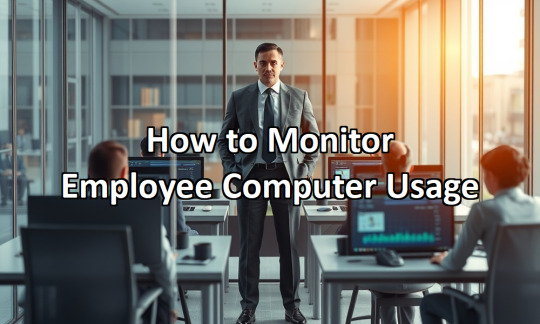
Questions to Leave You Thinking
As we wrap up, I want to toss out some questions to chew on. There’s no one-size-fits-all answer to how to monitor employee computer usage, and the best solutions come from honest reflection:
Is monitoring a sign of distrust, or a practical necessity in a risky digital world?
How would you feel if your every click was tracked? Would it change how you work?
Can businesses boost productivity without monitoring, through better training or incentives?
Where’s the line between protecting company interests and respecting personal space?
These aren’t just management questions—they’re human ones. Whether you’re a CEO, a team lead, or an employee, your perspective shapes how this tech gets used. Tools like OsMonitor, Teramind, ActivTrak, and Hubstaff are just that: tools. They don’t decide your values or your culture. That’s on you.
So, what do you think? Is monitoring a game-changer or a trust-breaker? Drop your thoughts below—I’d love to hear how others are navigating this tricky terrain. Let’s keep the conversation going.
0 notes
Text
监控局域网电脑桌面:技术、伦理与职场平衡的思考
在数字化时代,局域网(LAN)作为企业内部网络的支柱,承载了无数信息流转与协作需求。而“监控局域网电脑桌面”这一技术,正逐渐成为许多企业管理员工工作效率、保护数据安全的工具。然而,这项技术究竟是管理利器,还是员工隐私的隐形威胁?本文将从技术原理、应用场景、伦理争议以及潜在风险等角度,探讨监控局域网电脑桌面的多面性,希望引发读者对技术与人性平衡的思考。
一、监控局域网电脑桌面的技术原理
监控局域网电脑桌面,简单来说,是通过专门的软件在企业内部网络中实时或定时捕获员工电脑屏幕的活动。这些软件通常部署在局域网服务器上,通过客户端程序与员工的终端设备连接,记录屏幕截图、键盘输入、应用程序使用情况,甚至是网络访问记录。常见的软件包括WorkWin、Teramind、ActivTrak和Hubstaff,它们各有侧重,但核心功能都围绕远程监控与数据分析。
以WorkWin为例,这款软件以其轻量级部署和高效的屏幕监控功能受到一些中小企业的青睐。Teramind则更注重行为分析,能通过AI算法检测异常操作,如未经授权的文件传输。ActivTrak强调用户友好性,提供直观的报表,帮助管理者了解员工工作模式。而Hubstaff则结合了时间追踪功能,适合需要按小时计费的远程团队。这些工具的共同点是利用局域网的稳定性和低延迟,确保监控数据的实时传输,同时减少对员工日常操作的干扰。
技术上,监控局域网电脑桌面并不复杂,但需要确保网络安全和数据合规性。软件通常会加密传输数据,以防止泄露;同时,管理员需要设置权限,避免监控数据被滥用。然而,技术的高效并不意味着应用的正当性,这让我们不得不思考:监控的边界在哪里?
二、监控局域网电脑桌面的应用场景
在企业中,监控局域网电脑桌面的需求往往源于以下几个方面:
数据安全与合规:某些行业,如金融或医疗,对数据泄露零容差。监控软件可以记录员工对敏感文件的操作,防止内部威胁。例如,一家企业发现员工频繁将客户数据导出到个人设备,监控系统及时报警,避免了潜在的法律风险。
生产力管理:管理者希望了解员工的工作效率,尤其在远程办公普及后。监控局域网电脑桌面可以显示员工是否长时间浏览无关网页或使用社交媒体,从而优化资源分配。
项目追踪:对于需要协作的大型项目,监控工具能记录每个成员的任务进度。例如,一家设计��司使用ActivTrak发现某员工反复修改同一文件,及时介入后发现是软件版本冲突,节省了项目时间。
这些场景看似合理,但也引发了一个问题:员工是否愿意被“全程注视”?如果监控局域网电脑桌面的初衷是为了效率,是否有可能适得其反,降低员工的信任感和创造力?
三、伦理与法律的争议
监控局域网电脑桌面的技术应用,离不开伦理与法律的审视。首先,员工的隐私权是一个绕不开的话题。虽然工作设备属于企业,但员工在工作中的行为是否应被完全透明化?例如,监控软件可能无意间记录到员工在午休时间查看的私人邮件,这种“附带监控”是否合理?
其次,法律风险不容忽视。在一些司法管辖区,监控员工电脑需要提前告知并获得同意,否则可能违反劳动法或数据保护法规。一家企业因未明确通知员工而被起诉,最终支付了高额赔偿金的案例,提醒管理者必须谨慎操作。此外,监控数据的存储和使用也需合规,若数据泄露,企业可能面临更大的法律和声誉危机。
从员工角度看,监控局域网电脑桌面可能带来心理压力。一位程序员曾分享,他在得知公司使用Teramind监控后,感到“每一次点击都被审视”,工作时变得过于谨慎,创意灵感也随之减少。相反,管理者可能认为监控是必要的,尤其在发现员工利用工作时间从事副业后。双方视角的冲突,让监控的正当性变得模糊。
四、利弊权衡与替代方案
监控局域网电脑桌面的利弊,取决于企业的文化和管理方式。以下是一些关键的权衡点:
优势:
提升数据安全性,减少内部威胁。
提供客观数据,帮助优化工作流程。
在远程办公中增强团队的透明度。
劣势:
可能损害员工信任,降低士气。
增加管理成本,包括软件费用和合规投入。
过度监控可能导致员工流失,尤其在创意型行业。
为了平衡利弊,企业可以考虑替代方案。例如,与其全面监控,不如设定清晰的绩效目标,通过成果而非过程评估员工。或者,使用Hubstaff等工具仅记录特定项目的工作时间,而非全天候屏幕监控。此外,定期与员工沟通,透明化监控的目的和范围,能有效减少误解。
五、引发读者思考:技术与人性的边界
监控局域网电脑桌面是一把双刃剑,它既能提升效率,也可能侵蚀信任。试想,如果你是员工,得知每一次鼠标移动都被记录,你会作何感想?如果你是管理者,面对数据泄露的风险,你又是否愿意放弃监控的“安全感”?这些问题没有标准答案,但值得每位职场人深思。
企业的核心是人,而非冷冰冰的屏幕数据。技术可以是工具,但不应成为控制的代名词。或许,真正的管理智慧在于找到技术与人性的平衡点:既保护企业利益,又尊重员工的尊严。你认为,监控局域网电脑桌面是必要的“防火墙”,还是信任的“破窗”?欢迎在评论区分享你的看法。
1 note
·
View note